Organic Agriculture

In recent days most agricultural professionals recommend ancient methods of agriculture to have a healthy lifestyle. Organic agriculture has become an unavoidable need of the day to preserve soil fertility and essential microbes that help plant growth. Most agricultural land is infertile due to excess use of chemical fertilizers. This has made a big impact in yield and nutrition facts which are supposed to be in the food.
It is essential to make sure the agricultural land is fertile enough for microorganisms to survive. Organic agriculture along with modern scientific approach is the best way for any agricultural land to be fertile. This helps to regain the originality of the end products including taste, colour and nutrition facts in Vegetables, fruits, pulses, greens etc.
Land development for Organic agriculture

Land development is the most crucial step towards great yields. It involves identification of the soil type, its water holding capacity, increasing the carbon content, ploughing and other steps to ensure proper treatment of soil for improved crop growth and yield. When it comes to Organic agriculture land development helps increase the potential of soil. It helps to improve the nutrient availability with completely natural means and makes land perfect for plantation. Organic farming advocates the use of 100% eco friendly techniques for land development that makes soil healthier and increases its life. Different methods are used to maximise the land usage while keeping the ecological balance. Let’s dig deeper into the steps involved for land development as per the organic farming norms.
Ploughing
Ploughing involves loosening the soil by digging and turning it over. Ploughing helps pull up the soil’s nutrients from the layers beneath. It increases the oxygen content in the soil that is good for the roots. Ploughing removes weeds, prevents disease causing pests from making home in the soil, and allows the roots to move deeper in the soil. It also provides proper ventilation to the plant roots and helps in the growth of good microbial activity in the soil.
Levelling
After ploughing, it is necessary to level the soil surface. For this a wooden or iron board called leveler, is used to level the field. Levelling allows proper and equal distribution of water during irrigation. The soil is levelled to prepare a strong foundation to the crops to be planted.
Increase Carbon Load
Increasing the carbon load helps in improving the soil biota. The carbon present in soil provides resistance to plants from physical degradation, increases microbial activity, and availability of water to plants. Carbon content also reduces soil erosion. Increasing the carbon content is advisable for better yields and stronger crops. Carbon content can be increased by strategic planting of certain crops, by adding Organic fertilizers, by reducing burning of stubble, and by decreasing soil erosion. The soil carbon content also depends upon the soil type, climatic conditions, temperature and crops grown earlier.
At Golden Era, we provide thorough reports on the health of the soil, water and other factors to maximize the land profitability. Land preparation is carried out in a planned manner considering the soil quality, water available, climatic conditions and crops to be planted. We give recommendations to help you get the best use of the land in a completely eco-friendly manner.
Soil testing and preparation
Soil is the lifeline of farming. Good nutrient rich soil can multiply the yield by 10 times. Since plants absorb maximum nutrients from the soil, it is important to loosen up the soil and treat it properly for healthy, strong and beautiful crops. The quality of produce is directly related to the fertility of soil. Thus, it is crucial to dedicate adequate efforts in the preparation of soil before plantation. When it comes to organic agriculture we also make sure to load the soil with essential minerals that help plant growth.
Soil, in its best form, has good water holding capacity, has proper aeration, good consistency or texture, a balanced pH and is highly rich in both micro and macronutrients. No soil is perfect, however with natural and advanced technique, it can be made better. Soil preparation ensures that the land is ready for sowing. It involves checking the soil type, its humus content, availability of essential micro and macro nutrients for plants, water holding capacity of the soil and climatic conditions.
The land preparation begins for autumn sowing after the standing crops are harvested, if present any, and continues until the next plantation is sown. Basic tillage helps get the soil to a standard level that is ideal for germination of seeds and plant growth. The seed bed preparation helps in early seed development, better germination and provides plant resistance to various conditions. It also improves the air circulation, and increases the nutrient availability.
The whole process of soil preparation depends upon the soil and climatic conditions. As per the present conditions, it is crucial to have a plan for soil development, since for different crops, the requirements are different.
Steps of Land Preparation
Soil is the basic necessity for a good crop yield. Soil can be prepared considering the following factors and steps:
Type of crops to be planted
Different crops need different soil conditions. The crop that grows well in sandy soil, will poorly yield if grown in clayey soil. For instance, if you want to grow a vegetable crop, then the soil must be clayey, moist and loose, so that the roots deepen themselves to get the most nutrients from the soil. Thus, it is necessary to identify the soil type and the crops to be planted.
Quality of Soil
The present conditions of soil are mandatory to be taken into account. Too much clayey, or too much sandy soil will provide a sufficient base for plants. A mixture of soil is always better for farming, for which soils are chosen as per different parameters to yield a better produce. Before plantation, it is necessary to identify the soil, the deficiency and humus content.
Soil composition
Soil consists of rock particles, water, air, humus, living organisms, minerals and organic matter. The soil in different regions are composed differently, they have different amounts of all these components, and all of these are important for plant development.
Water holding capacity
Since different soils are composed of varied particles, they have different porosity/water holding capacity. Sandy soil, having large soil particles, has significantly less water holding capacity as compared to clayey and loamy soil. Whereas, clayey soil has very high porosity/water holding capacity because of smaller soil particles. Loamy soil has a water holding capacity that falls between that of clayey and sandy soil. The water holding capacity of soil helps identify how much and how many times you need to water the plants. Good soil structure results in higher biological movement in the soil that allows water, oxygen, and microorganisms to accumulate well.
Soil testing

A professional soil test provides you with complete information regarding the soil texture, organic matter content, nutrient availability, water holding capacity, and carbon content. The soil test also provides details about probable soil toxins. This helps agricultural professionals understand the quality of soil and improvements need to be made for it to be suitable to do Organic Agriculture.
Soil preparation
After thoroughly carrying out the aforesaid steps, it is recommended to invest sufficient time in soil preparation as it can improve the yield many folds. Necessary changes are made as per the soil quality, climatic factors and crop to be planted.
Increasing carbon content
Organic Farming supports the use of pure environment friendly manure and organic fertilizers. Healthy levels of organic or carbon content is necessary for better growth of crops. For this purpose, manure or organic fertilisers are added to soil in a planned manner, if needed, in stages, for complete increase in the carbon content of the land. This helps make the soil fertile by improving the microbial activity.
Water testing
Water is life. Water plays a crucial role in the transportation of minerals in plants, thus it is of due importance to have good quality water in organic farming. The water quality test helps ensure choice of organic fertilizers and to minimise the risk of getting polluted water into the farms. Agricultural water testing is important considering the crop irrigation and livestock water resources. Toxicity, salinity and infiltration are major concerns regarding water in the agricultural farm. We need to make sure water is chemical free in order to get best results practicing organic agriculture.
Total dissolved salts (TDS) needs to be checked to determine the health of water. Total dissolved solids consist of inorganic salts, mainly of calcium, magnesium, sodium, potassium, chloride, carbonates, sulphates and some other in minimal quantities. The TDS comes from the weathering of rocks and minerals such as lime, gypsum, etc. These might pollute the water if present in high amounts, also it may be noted that these are not visible to the naked eyes or upon analyzing through smell.
When crops take up water with high TDS levels, the water gets evaporated but the high amount of salt residue remains back in the soil, which alters the composition of soil. It is crucial to check the irrigational water for pathogens, toxic chemicals and other disease causing factors. Different dissolved salts in water are capable of reducing the availability of water to the crop which then affects the crop yield. It is advisable to grow fruits, vegetables, and other crops depending on the water and soil available. The imbalance in water nutrients can result in accumulation of ions in the land and can impact the crop yield.
pH is another factor that highly impacts the growth of crops. A very high or low pH may result in stunted plant growth and an imbalance in the nutrient content. It interferes with the plant roots, and the availability of nutrients in the soil. For example, phosphorus is the most affected nutrient due to pH levels. In a high pH, calcium and phosphorus bind with each other resulting in the decrease in available phosphorus for plants. Similarly, at low pH levels, iron and aluminium bind together with phosphorus to decrease the nutrient. Thus, it is essential to opt for water testing for improved plant growth and overall yield.

Crop recommendation
For high yields, crops are selected strategically in organic farming. The crop selection depends upon the quality of soil, water supply, climatic conditions and other factors, to get maximum benefit of the land. Organic farming techniques ensure the ethical usage of land without any use of harmful chemicals and methods.
Understanding the soil is essential for Organic Agriculture:
Alluvial soil:
Alluvial soils are present particularly in the Northern region of India and comprises 35% of the total land. They are also called riverine soils as they are generally found around river basins. This soil is a mixture of clayey soil and loamy soil. It is significantly rich in organic matter i.e. it is full of humus but lacks nitrogen. They tend to drain water quickly, hence have lower water holding capacity.
Suitable crops for Alluvial soil:
Cotton, wheat, rice, bajra, black and green gram, soybean, groundnuts, sesame, jute, maize, oilseeds, vegetables, mustard, linseed, pigeon pea, chickpea, tobacco, pea.
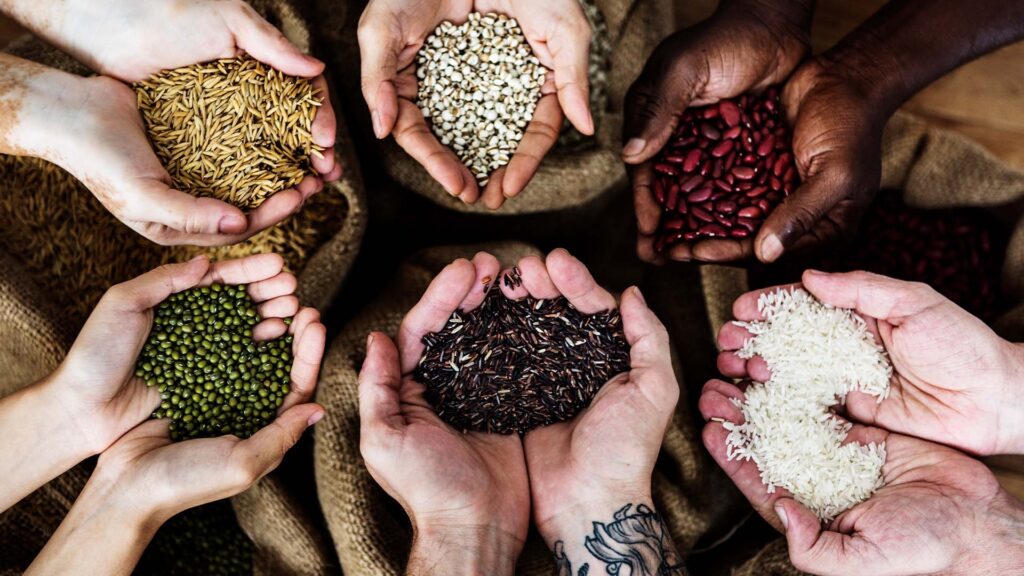
Black soil:
Black soils are also known as cotton soils as they are the best for growing cotton. These are formed by the weathering of lava rocks and are rich in calcium, potash, lime, magnesium, carbonate, iron, and aluminum. However, they lack organic matter, nitrogen, and phosphorus. They are clayey in nature and hence get sticky upon getting wet, and might develop cracks upon excessive drying.
Suitable crops for Black soil:
Cotton, sugarcane, rice, wheat, jowar, sunflower, cereals, vegetables, citrus fruits, groundnut, oilseeds, and millets.
Red soil:
Red soils cover around 10% of India’s total land. They have a rich red colour due to high iron oxide content. These are rich in iron and aluminum but deficient in nitrogen, phosphorus, magnesium and organic matter. They appear yellow in a hydrated state.
Suitable crops for Red soil:
Rice, sugarcane, maize, peanuts, finger millets, pulses, potato, millets, mango, orange, vegetables, and wheat.
Laterite soil:
Laterite soils are rich in iron, aluminium, titanium, but have low amounts of plant nutrients. These have low organic matter content. They are generally found in the Western and Eastern ghats, in India.
Suitable crops for Laterite soil:
Rubber, coconut, cashew nuts, tea, cotton, coffee, wheat, rice and pulses.
Arid soil:
Arid soils are sandy in nature and have less organic matter and moisture. These are saline due to the presence of high salt content. Arid soils are rich in sodium and carbonates but have lower nitrogen content.
Suitable crops for Arid soil:
Wheat, corn, millet, cotton, pulses, barley and other saline-tolerant crops.
Desert soil:
As the name suggests, these soils are composed of sandy soil and contain a good amount of nitrogen. Drought resistant crops such as barley and millet grow the best here. Other crops can be grown with the help of good irrigation facilities.
Suitable crops for Desert soil:
Millet, barley, ground nut, sorghum
We, at Golden Era carefully research for the best suited crops for your land as per the soil type, water availability, climatic conditions, and other factors. Suitable crops help you gain maximum benefits and also help keep the soil health intact.
Buyback or Contractual farming
Most farmers and entrepreneurs need access to the best agricultural techniques and methods. We assist such farmers and entrepreneurs with all the necessary information regarding what to grow, when to grow and how to grow.
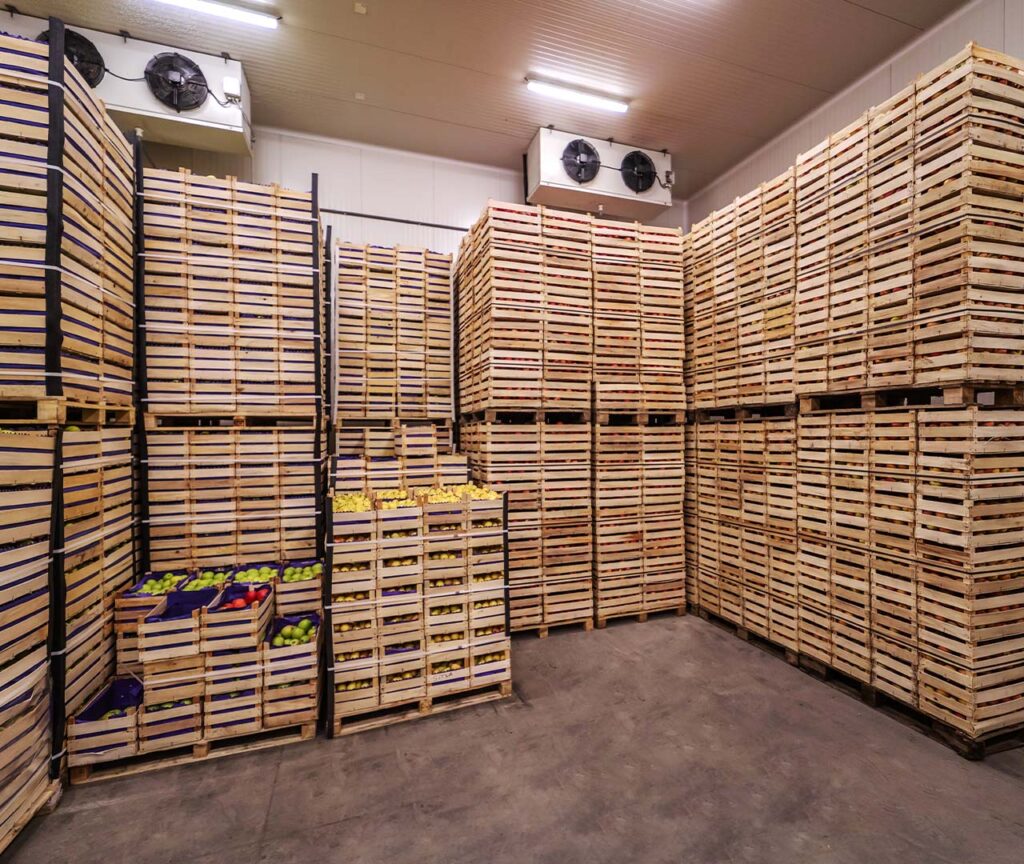
Contractual farming refers to agricultural production carried on agreement between buyer and the farmers, by proper production and management of yielded crops. The product should meet the expectation of the buyer and thus be of superior quality. With contractual farming, we assist people with soil testing, crop recommendation as per the soil and climatic conditions, irrigation, nutrition management, pest management, plant disease management and proper selling of the crops. With help of the best agricultural practices farmers can multiply their yields.
With the motto of organic farming, we provide complete solutions to farmers right from the cultivation to harvesting. Farmers can complete the sale with minimal costs, since they get market assured value for their produce without incurring marketing and transactional costs. It helps reduce risk of agricultural produce and cuts off marketing costs. Contractual farming offers a wide market for small farmers.
Plant Nutrition Management in organic farming
The process of plant nutrition begins even before plantation through proper land development. The soil needs to have required macro and micronutrients as per the standard levels for improved plant growth. If plants lack essential nutrients, then the yield will be less and of poor health. As a farmer, one should be aware of common plant nutrient requirements, diseases, and pests. Knowing the symptoms of deficiency and excess of nutrients are necessary for proper management of crops. One should never experiment with fertilisers, sprays or supplements on crops without proper research and identification of crops. Using insecticides and pest repellents loaded with harmful chemicals also degrades the quality of plants. Thus, it is advised to have a thorough analysis of the crops, soil type, and climatic conditions for proper plant nutrition management.
Plants need nutrients to carry out different biological functions such as photosynthesis, transportation, reproduction and growth. The nutrients required by plants can be divided into macro and micro nutrients. Sodium, potassium, phosphorus, sulphur, calcium, magnesium are the macronutrients required by plants. Among these Nitrogen (N), Phosphorus (P) and Sodium (Na) are considered the most important nutrients for plants.
The micro nutrients required by plants include iron, manganese, boron, copper, zinc, chlorine, molybdenum, and nickel. These are vital for some life processes and are needed in trace amounts only.
The amount of nutrients required by plants depend mainly on the crop type, variety, climatic conditions, soil properties, and fertilizations management. Different crops require different amounts of nutrients and supplies.
In Organic farming, we strictly avoid the use of harmful chemical filled inorganic fertilisers rather make use of organic fertilisers which are prepared from natural ingredients. The organic fertilisers improve soil quality, make plants stronger, improve the yield and help the earth sustain. A planned structure is prepared according to the needs of different crops to increase the yields.
At Golden Era, we provide our clients with strategic planning on plant nutrition management to get maximum benefits from the crops without hampering the natural ecosystem of the soil. We support farmers and entrepreneurs who want to convert their existing inorganic farms to completely organic farms. We provide them with necessary information, soil tests, water tests, plant nutrition management, and overall care of the farm. This helps them maximise profits economically.
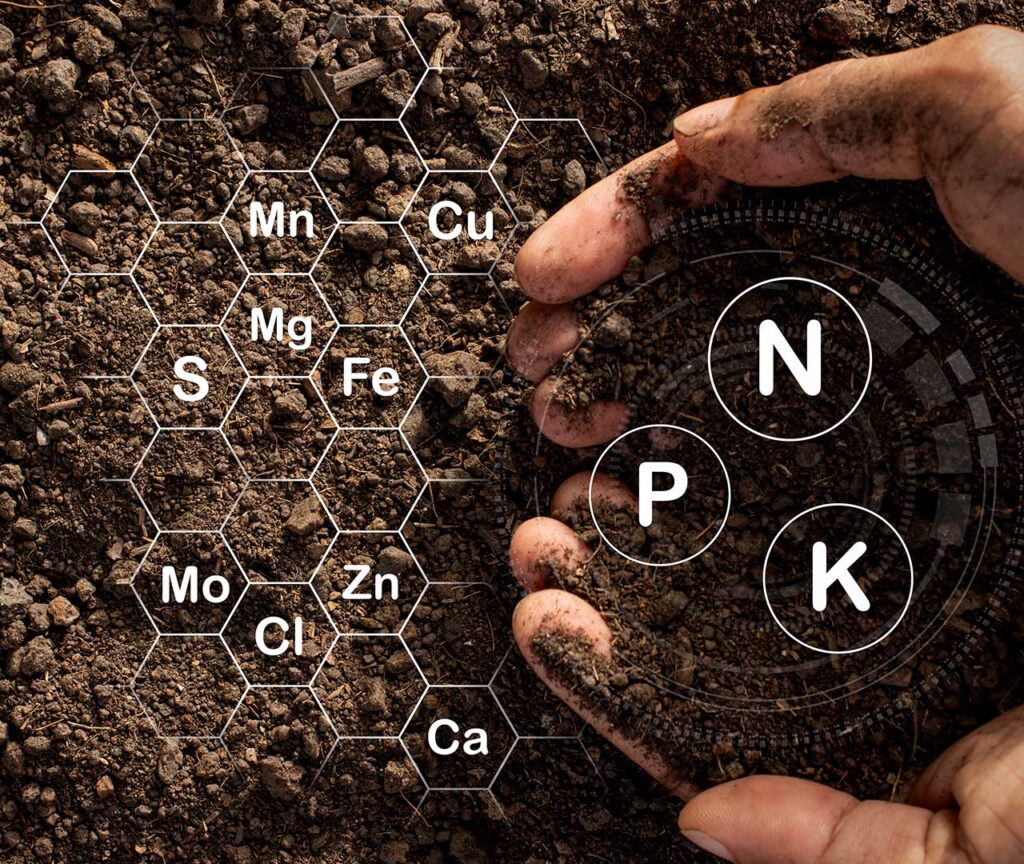
Crop protection can be done by using resistant varieties of crops, crop rotation, organic pest repellents, manual pest catching method and other organic farming techniques. We apply the most suitable pest management techniques to help the crops prosper without any harm from the pests. It is made sure that helpful insects such as bees and butterflies stay healthy and remain in the field for pollination. The common pest management techniques involve:
Crop rotation
In Organic agriculture crop rotation plays a major role in regaining soil nutrition that supports healthy plant growth. Crop rotation involves growing different varieties of crops in a series. This prevents pests from getting familiar with the crops and hence reduces their presence. It not only develops pest resistance but weed resistance as well. For instance, many pathogens such as spores and sclerotia make home in host crops and destroy plant health. But, if we plant a non-host crop, the survival of these pathogens becomes difficult and hence, we can reduce the pests effectively. Crop rotation helps remove common roots and stem pests without the use of any inorganic pesticide.
Intercropping
The simultaneous plantation of two or more crops in the same field is termed as intercropping. This creates a diversified environment for pests by the disruption of olfactory and visual host plants. It reduces host plant qualities in the crop, hence, pests do not attack.
Choosing resistant crops
There are certain varieties of crops that are genetically resistant to most pests. Marigold, mint, basil, thyme are some of the naturally pest resistant crops.
Maintain field hygiene
Maintaining field hygiene is crucial for better development of crops. The improper treatment of animal manure, water for irrigation and sewage management can cause a growth in pests. Pests can contaminate the field through the machineries used, people visiting the farms and even by the farmer.
Organic pest repellents
With the advancement of technologies, pest repellents have been developed which are organic in nature and remove pests effectively. Golden Era has prepared effective yet eco friendly pest repellents that are proven to work against pest repellents. These are made from natural oils, plant extract from naturally pest resistant plants such as garlic, neem, mint, Karanja, chrysanthemum, rhenium, etc. These plant extracts were used in earlier times by our farmers in India. We revolutionized the age old practice into easy to use organic pest repellents that can be mixed with water to apply either as basal spray or foliar spray.
Integrated pest management recommends using multiple strategies to combat pests. Organic farming advocates the proper management of useful pests such as butterflies and bees that help in pollination, hence the pest management is carried out to save these pests in particular. It is important to protect the crops from pests in the long term for better yield, healthy produce and to reduce losses.
At Golden Era, we provide customized pest management to suit the needs of your crops. We include various effective yet eco friendly measures to reduce and remove pests from the crops for a long time. Our scientifically crafted organic pest repellents and insecticides help remove harmful pests without hindering the activity of butterflies, bees and other useful insects.
Our wide range of organic pest repellents, insecticides, and fungicides are made from 100% natural ingredients procured from our own farms and different parts of India. These products have been tested multiple times even on our own farms and have been 100% effective in pest management. Our experts are constantly trying to make effective, organic and eco-friendly farm products to suit the needs of the crops and be safe to the farmers as well. The horrendous use of chemical loaded pest repellents, insecticides and fungicides have not only damaged the crops but the farmers and field workers as well. The harmful chemicals in them damage the soil quality, plant strength and cause various chronic diseases in human beings. We, at Golden Era, have a vision to protect the farmers, plants and the soil by consulting, managing, and providing state-of-the-art agricultural services.
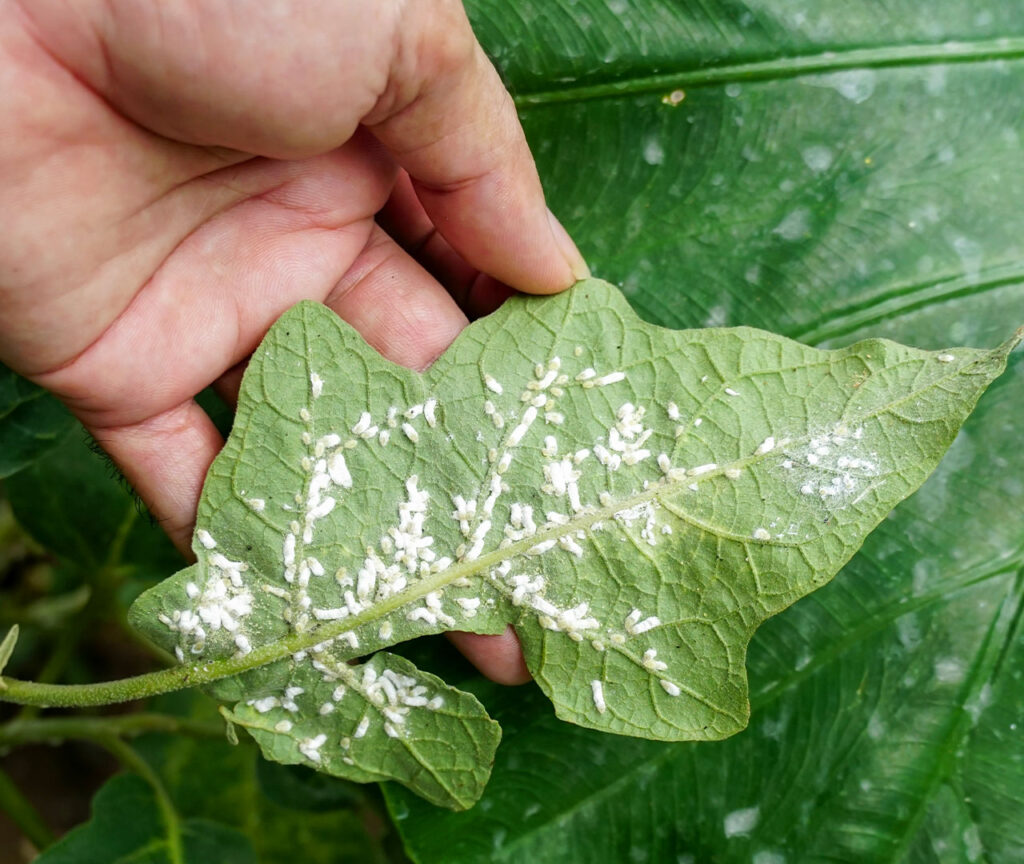
Pest management
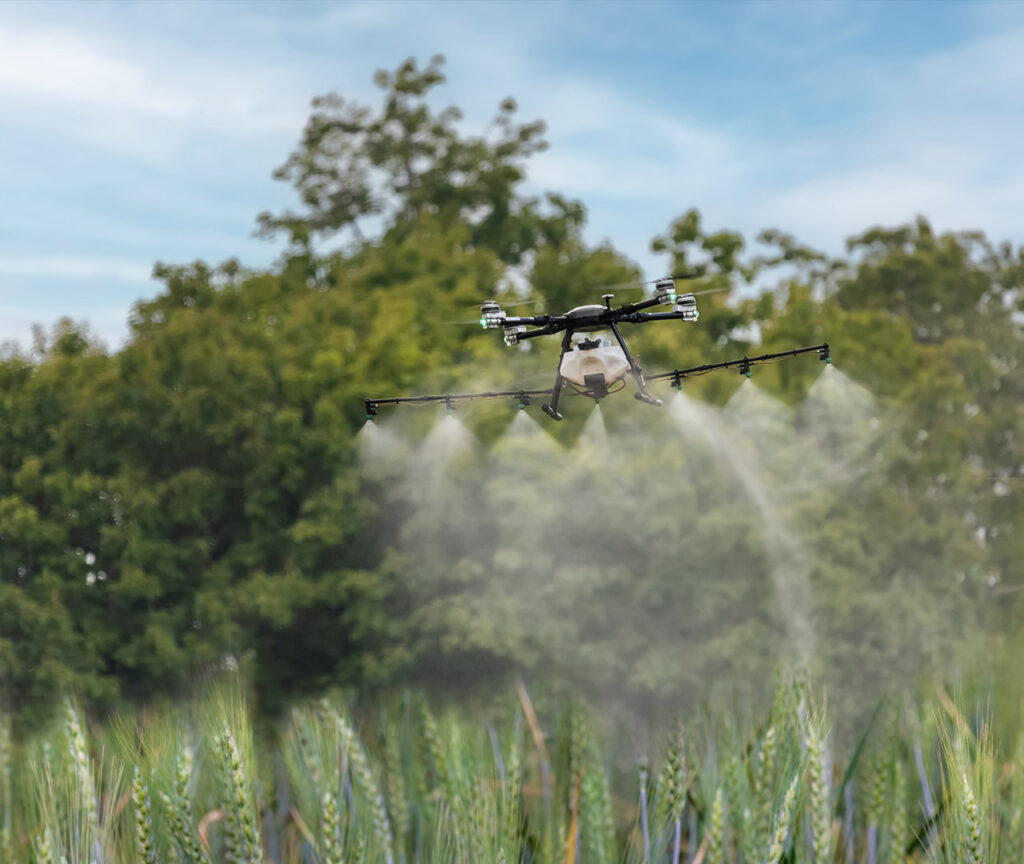
Pest management ensures protection of crops from pests using organic methods that are safe and environment friendly. This involves the use of only well-selected organic pest repellents that do not contain any possible harmful chemical ingredient. Organic farming strictly prohibits the use of pest repellents or any harmful chemical containing supplies. Weevils, mealybugs, thrips, bollworms, pod sucking bugs, root borer, locusts, Japanese beetles, etc are common pests that destroy crops. The pest promotes plant diseases, stagnant growth, dull fruits and vegetables, and damages the crops. Thus, farmers have to protect their crops against pests to get a high crop yield.
Why is pest management necessary in organic agriculture?
- Increases the productivity of land.
- Gives an increased yield.
- Protects the natural ecosystem of the field.
- Helps get healthy fruits, vegetables and produce.
- Reduces losses.
- Protects the farm workers from bites.
- Helpful insects can help in pollination, such as bees & butterflies.